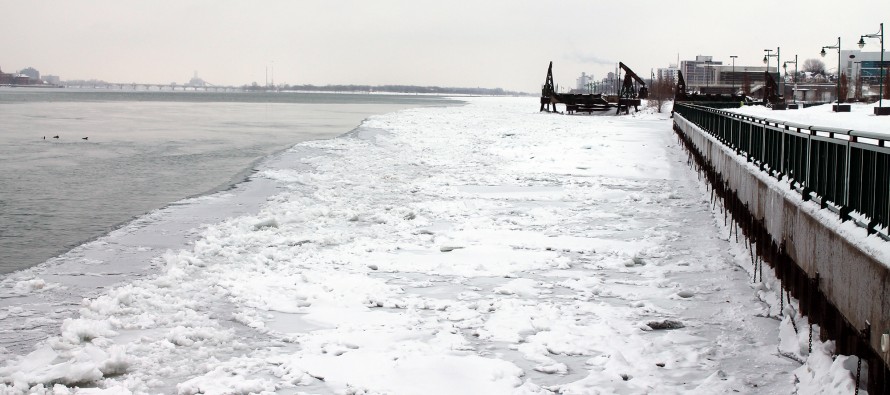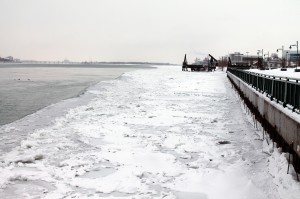Shipping slowed by ice

by Dan Gray
The Canadian Coast Guard is warning shipping companies they may not be able to navigate the Detroit River without icebreaking support.
Overhead satellite images of the eastern Great Lakes show that Lake Erie, Lake St. Clair and the Detroit River are all almost 100 per cent frozen over. The images provided by Environment Canada also show that the ice varies in type and thickness. Some of the ice, known as thick lake ice, can be as much as 70 cm or more than two feet thick.
The amount of ice forced the coast guard to issue a notice informing captains that most vessels would need to be escorted by an ice breaker.
“From Pelee Pass to Sarnia, that’s an icebreaking zone,” said Andy Maillet, superintendent of operations with the Canadian Coast Guard. “Ice conditions in the river, vessel horsepower and weather conditions will be taken into consideration when prioritizing transits.”
Part of that icebreaking zone includes the 48 km long Detroit River, connecting Lake St. Clair to Lake Erie. There are eight icebreakers assigned to patrol a large section of the lower Great Lakes including the river. The notice was first issued Jan. 12 mainly due to the building ice conditions. Many ships need an escort and Maillet says they need to be prioritized. The Canadian Coast Guard works with the U.S. Coast Guard and the captains of the cargo ships to decide how much help they will need.
According to Maillet, vessels that are going to be relatively easy to escort due to higher horsepower and other factors usually take priority over tugs pulling a barge. Eventually they have to move the tugs and barges on days that are for them to transit.
Ice conditions have proven to be difficult for everyone involved.
“The conditions are more then we could typically expect at this time of year,” said Tom Anderson, director of ports and harbours for Algoma Central Corporation. “Probably the worst in thirty odd years.”
Algoma Central Corporation is a Canadian-owned shipping company that operates domestically on the Great Lakes and also has an international division.
At this time of year they are moving road salt on Lake Huron and Lake Michigan and they have tankers travelling through Lake Erie. Some of these tankers are about the length of a football field and stand as high as a 10 storey building.
“The ice slows us down. Most of our transits are supported with icebreakers, whether from Canada or the United States. If we didn’t have these icebreakers these trips wouldn’t be done, the ships wouldn’t be able to navigate on their own in these ice conditions,” said Anderson.
Until the notice is changed shipping will be delayed in their transit of the Great Lakes thanks to the ice.



